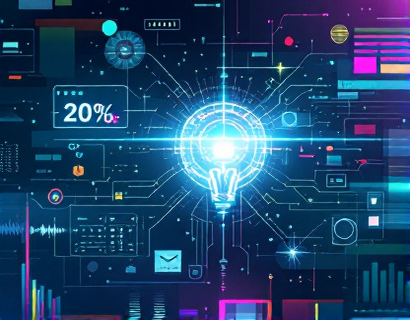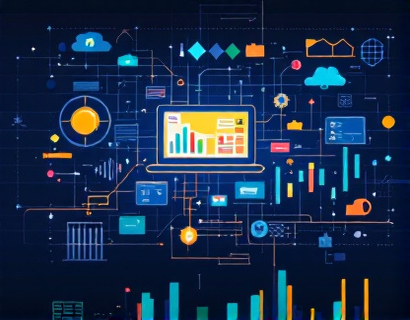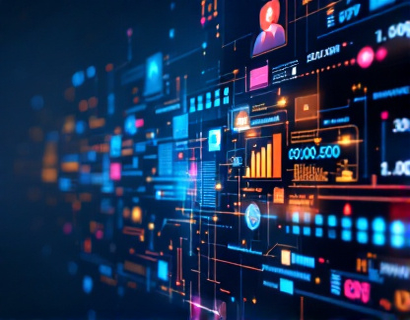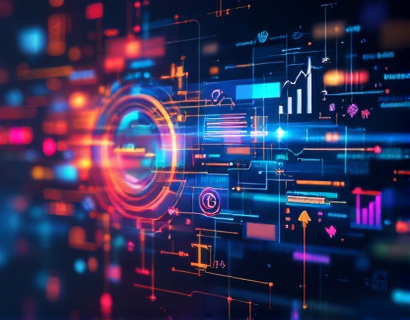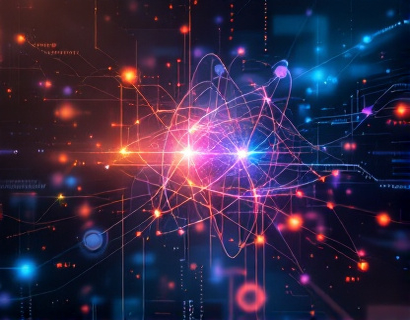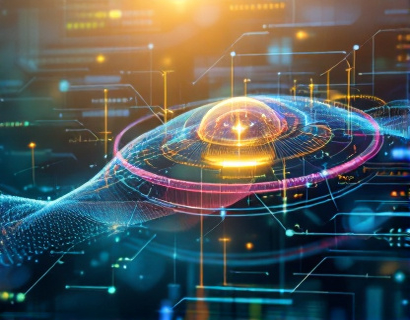Unlocking Digital Efficiency: Leveraging AI and Crypto for Enhanced Productivity in the Modern Era
In the rapidly evolving digital landscape, the convergence of artificial intelligence (AI) and cryptocurrency is paving the way for unprecedented levels of productivity and efficiency. This article delves into the advanced solutions that merge these two transformative technologies, offering tech innovators and early adopters a glimpse into the future of task management and workflow optimization.
The integration of AI and cryptocurrency is not just a novel concept but a practical approach to enhancing digital workflows. AI, with its ability to process vast amounts of data and learn from patterns, combined with the decentralized and secure nature of cryptocurrency, creates a powerful synergy that can revolutionize how we manage tasks and optimize workflows.
Understanding the Synergy of AI and Cryptocurrency
To fully leverage the potential of AI and cryptocurrency, it's essential to understand how these technologies complement each other. AI excels in automating complex tasks, providing insights through data analysis, and enhancing decision-making processes. Cryptocurrency, on the other hand, offers a secure, transparent, and decentralized means of transaction and data storage.
The combination of these technologies can lead to more efficient and secure digital environments. For instance, AI can be used to manage and optimize blockchain networks, ensuring smooth and secure transactions. Conversely, the immutable and transparent nature of blockchain can enhance the reliability and trustworthiness of AI systems, particularly in scenarios where data integrity is paramount.
Enhanced Task Management through AI and Crypto
One of the most immediate benefits of merging AI and cryptocurrency is the enhancement of task management systems. Traditional task management tools often struggle with scalability, security, and user experience. By integrating AI and cryptocurrency, these tools can become more intelligent, secure, and user-friendly.
AI-driven task management platforms can automate routine tasks, predict user needs, and provide personalized recommendations. For example, an AI system can analyze a user's workflow and suggest optimal task sequences, allocate resources efficiently, and even predict potential bottlenecks before they occur. This level of automation not only saves time but also reduces the cognitive load on users, allowing them to focus on higher-value tasks.
Cryptocurrency adds an additional layer of security and transparency to these systems. Transactions within the task management platform can be recorded on a blockchain, ensuring that all actions are immutable and verifiable. This transparency builds trust among users and stakeholders, as they can track the progress and completion of tasks in real-time without the risk of tampering.
Workflow Optimization with Smart Contracts
Smart contracts, a key feature of blockchain technology, can significantly optimize workflows in various industries. When combined with AI, smart contracts become even more powerful tools for automating and enforcing agreements.
AI can be used to draft and optimize smart contracts, ensuring they are legally sound and tailored to specific use cases. For instance, in project management, smart contracts can automatically release payments to contractors once predefined milestones are met. AI can monitor the project's progress, ensuring that all conditions are accurately tracked and enforced.
Moreover, AI can predict potential issues in workflows and suggest adjustments to smart contracts in real-time. For example, if a delay is detected, the AI system can propose extensions or adjustments to the contract terms, minimizing disruptions and ensuring smooth project execution.
Decentralized Identity and Access Management
Another critical area where AI and cryptocurrency intersect is in decentralized identity and access management. Traditional identity management systems are often centralized, making them vulnerable to breaches and misuse. By leveraging blockchain and AI, organizations can create decentralized identity solutions that enhance security and user control.
AI can help in creating and managing digital identities, ensuring that they are unique, secure, and easily verifiable. Blockchain technology ensures that these identities are stored securely and can be managed decentralized, reducing the risk of centralized points of failure. Users can have full control over their identity data, choosing who can access it and for what purposes.
This decentralized approach not only enhances security but also improves user experience. Users can seamlessly authenticate themselves across different platforms and services, eliminating the need for multiple passwords and reducing the friction associated with traditional login processes.
Data Privacy and Security
Data privacy and security are paramount in the digital age, and the combination of AI and cryptocurrency offers robust solutions to these challenges. AI can be used to detect and mitigate security threats in real-time, analyzing patterns and anomalies to identify potential breaches before they occur.
Cryptography, a fundamental aspect of cryptocurrency, ensures that data is encrypted and secure during transmission and storage. AI can enhance cryptographic techniques, creating more sophisticated encryption methods that are harder to break. Additionally, AI can manage cryptographic keys, ensuring they are securely stored and accessed only by authorized users.
Blockchain's inherent properties, such as immutability and transparency, further bolster data security. Once data is recorded on the blockchain, it cannot be altered without detection, providing a tamper-proof record of all transactions and interactions. This level of security is particularly valuable for sensitive data, such as financial transactions, health records, and personal information.
Incentivization and Tokenization
The tokenization of assets and incentives is another area where AI and cryptocurrency converge to drive productivity and engagement. By tokenizing rewards and incentives, organizations can create more motivating and transparent systems.
AI can analyze user behavior and preferences to design tokenization schemes that align with specific goals and incentives. For example, in a collaborative work environment, AI can propose a token system where team members earn tokens for contributing to projects, completing tasks, and demonstrating desired behaviors. These tokens can then be used to access premium features, receive discounts, or even be traded for other assets.
Cryptocurrency enables the seamless and secure distribution of these tokens, ensuring that incentives are delivered promptly and transparently. The use of smart contracts can automate the distribution process, ensuring that tokens are awarded based on predefined criteria without the need for intermediaries.
Case Studies and Real-World Applications
Several real-world applications demonstrate the practical benefits of integrating AI and cryptocurrency for enhanced productivity. One notable example is the use of AI-powered blockchain platforms in supply chain management.
In this context, AI can optimize inventory management, predict demand, and identify potential disruptions in the supply chain. Blockchain ensures that all transactions and movements of goods are recorded transparently and immutably. Smart contracts can automate payments to suppliers and manufacturers based on delivery and quality metrics, streamlining the entire process.
Another example is the use of AI and cryptocurrency in the creative industry, particularly in content creation and distribution. AI can assist in generating content, such as writing articles, creating music, or designing graphics. Cryptocurrency can be used to tokenize and sell these creative assets, providing artists and creators with a direct and fair way to monetize their work. Blockchain ensures that ownership and royalties are tracked transparently, reducing disputes and ensuring fair compensation.
Challenges and Considerations
While the integration of AI and cryptocurrency offers numerous benefits, it also comes with challenges that need to be addressed. One of the primary concerns is the regulatory landscape. The decentralized nature of cryptocurrency and the complex algorithms of AI can make it difficult to navigate regulatory requirements across different jurisdictions.
Another challenge is the technical complexity involved in integrating these technologies. Organizations need to invest in skilled personnel and infrastructure to develop and maintain AI and blockchain systems. Additionally, there is a need for standardization to ensure interoperability and ease of use.
Privacy concerns also play a significant role. While blockchain provides transparency, it can also expose sensitive data if not properly managed. AI systems must be designed with privacy by design principles to ensure that user data is protected and used ethically.
Future Trends and Opportunities
Looking ahead, the convergence of AI and cryptocurrency is poised to bring about even more innovative solutions. One emerging trend is the development of decentralized AI platforms, where AI models and data are managed and trained in a decentralized manner.
These platforms can leverage the collective computing power of a decentralized network to train AI models, ensuring that no single entity has control over the entire process. This not only enhances security but also promotes collaboration and innovation. Additionally, the use of AI in managing and optimizing decentralized finance (DeFi) applications can lead to more efficient and accessible financial services.
Another exciting opportunity is the integration of AI and cryptocurrency in the Internet of Things (IoT) ecosystem. AI can process and analyze the vast amounts of data generated by IoT devices, while cryptocurrency can ensure secure and decentralized communication between devices. This synergy can lead to smarter, more autonomous systems that enhance productivity and efficiency across various industries.
Furthermore, the rise of Web3, a decentralized internet powered by blockchain, AI, and other emerging technologies, promises a new paradigm for digital interactions. Web3 applications will leverage AI for personalized experiences and cryptocurrency for secure and transparent transactions, creating a more equitable and user-centric digital environment.
In conclusion, the integration of AI and cryptocurrency is not just a technological trend but a transformative shift that can redefine productivity and efficiency in the digital age. By harnessing the strengths of both technologies, organizations and individuals can unlock new levels of performance, security, and innovation. As these technologies continue to evolve, the possibilities for enhancing digital workflows and task management will only become more exciting and transformative.












